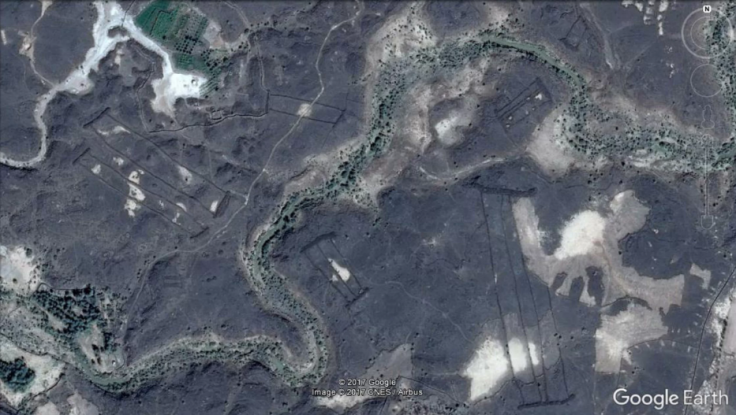Scientist Using Google Earth Finds Mysterious Stone Gates From Ancient Saudi Arabia

A scientist using Google Earth has stumbled upon hundreds of ancient stone structures in Saudi Arabia.
The formations are being referred to as “gates” but their actual function is still a mystery — according to researcher David Kennedy, they are not like anything he has seen before.
“I refer to them as gates because when you view them from above they look like a simple field gate lying flat, two upright posts on the sides, connected by one or more long bars,” Kennedy said in a statement from the University of Western Australia. “They don’t look like structures where people would have lived nor do they look like animal traps or for disposing of dead bodies. It’s a mystery as to what their purpose would have been.”
Stone animal traps are known as kites and ancient people used them to get migratory animals. Kennedy has previously published findings on these structures. Other kinds of ancient stone structures, some of which could have been hundreds of feet across, included funerary monuments and wheels that had an unknown purpose. The funerary monuments, called pendants, had formations in which a circular structure connected to a sort of stone tail whose shape varied based upon the region in which they constructed — in Jordan, for example, those tails were straight lines leading out from the circles while in Saudi Arabia they had a more triangular shape, sometimes giving the entire pendant the look of a keyhole.
In the case of the gates, Kennedy has previously explained in a lecture that the name came was chosen because, “We wanted something that didn’t imply what we thought that they were for.”
“Trying to think of a name for them when we first encountered these,” he said, “they look like those old fashioned things that you got in gymnasia … two handles with these tough springs in between that you try to pull apart.”
Although their use is still unclear, the university said there are almost 400 of these stone gates that Kennedy found.
His new research is due to be published in the journal Arabian Archaeology and Epigraphy.
Kennedy has used aerial imagery to discover monuments hiding in plain sight for years, including flying over Jordan and photographing stone structures in a lava field in that country, a neighbor of Saudi Arabia. As part of that interest, he established the Aerial Photographic Archive for Archaeology in the Middle East.
“You can’t see them in any intelligible way at the ground level but once you get up a few hundred feet, or with a satellite even higher, they stand out beautifully,” he said.
According to the university, the structures were probably built between 2,000 and 9,000 years ago, possibly by the ancestors of today’s Bedouin, the nomadic people in the Middle East who particularly live in North Africa, Egypt, Israel, the Arabian Peninsula and Syria. Those people refer to the structures as The Works of the Old Men.”
The gates are found in groups and are largely located in the Harrat Khaybar, a lava field in Saudi Arabia.
“While we [tend] to think of Saudi Arabia as largely barren mountains and desert, it was also home to an immense number of archaeological sites that were yet to be identified, recorded and mapped,” the university said.
© Copyright IBTimes 2024. All rights reserved.





















